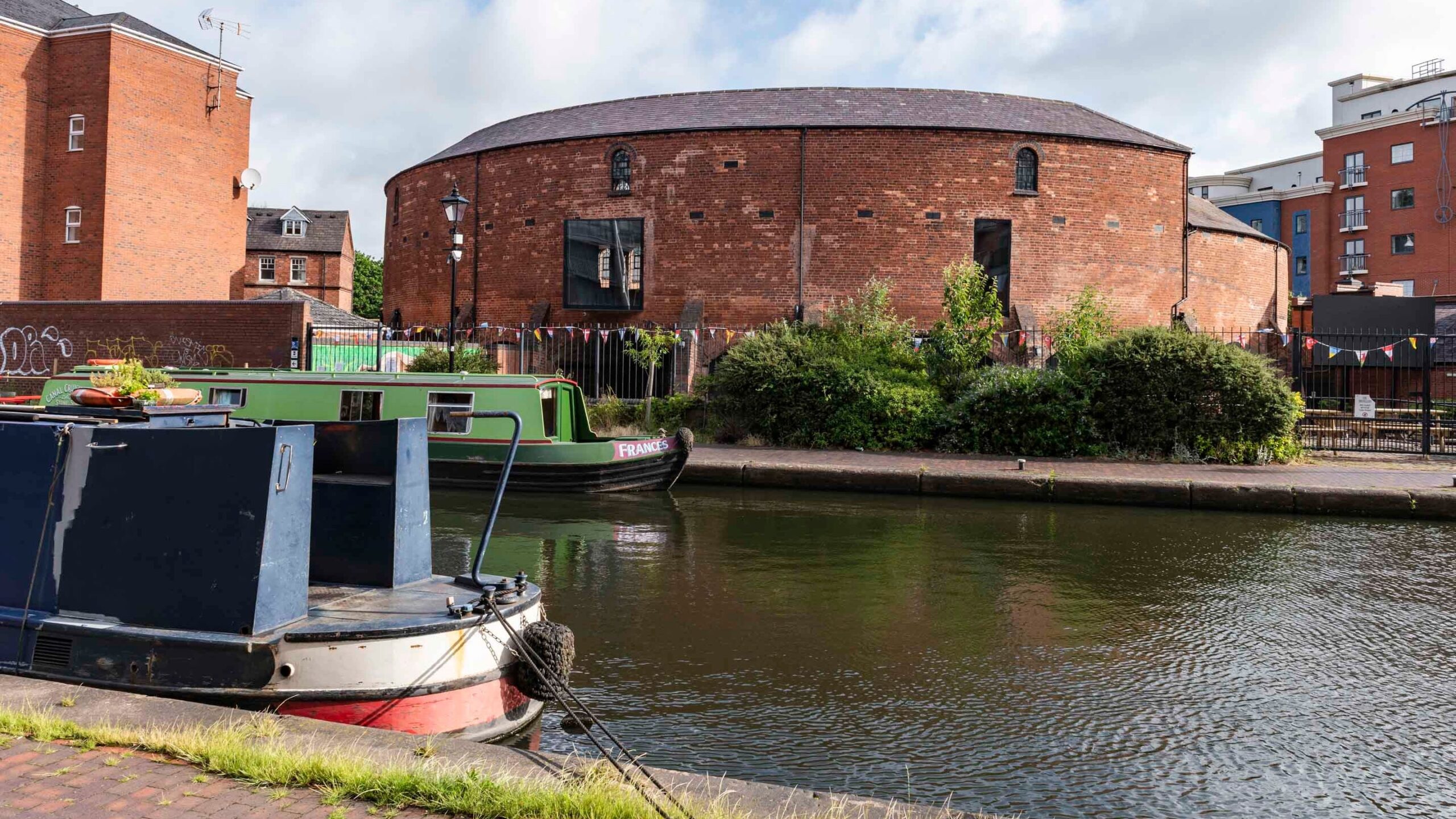The best free self-guided walking tours
Birmingham 1
The Roundhouse – Canal Heritage Comes Full Circle
Please note that the majority of the Roundhouse building has been transformed into office space. There is a Visitor Centre with a display space which is free to enter for all visitors. See the National Trust website
Standing before The Roundhouse’s distinctive horseshoe shape, you’re looking at one of Birmingham’s most ingenious combinations of form and function. Built in 1874, this Grade II* listed building elegantly solved multiple industrial problems while barely advertising its utilitarian origins.
The building’s unusual curved design wasn’t architectural showing off – it was precisely engineered to allow horse-drawn wagons to enter through one entrance and exit through another without the difficult and dangerous process of turning around. Study the cobbled courtyard, worn smooth by decades of hooves and iron-rimmed wheels. The gradient of the courtyard isn’t random either – it was carefully calculated to help loaded wagons brake on their way down to the canal.
Look up at the distinctive windows on each level. The ground floor’s high, wide apertures allowed cart access, while the first floor’s lower, broader windows lit the stables where working horses were kept. The top floor’s smaller openings ventilated the hay loft. The blue brick headers above each window aren’t just decorative – they’re harder than standard bricks and were used to bear the extra structural weight.
Perhaps most remarkably, The Roundhouse represents Birmingham’s Victorian talent for efficient use of space. From this single building, horses could be stabled, wagons loaded and unloaded, goods stored, and direct access to the canal network maintained. Even the building’s curve maximizes the space available on this awkward canalside plot. Every inch was dedicated to keeping the city’s industrial transport network moving.
Today’s careful restoration by the National Trust and Canal & River Trust maintains these industrial stories while giving the building new life.
Next, we’ll see how the building connected to the wider canal network as we walk along the Birmingham Canal Old Line…

